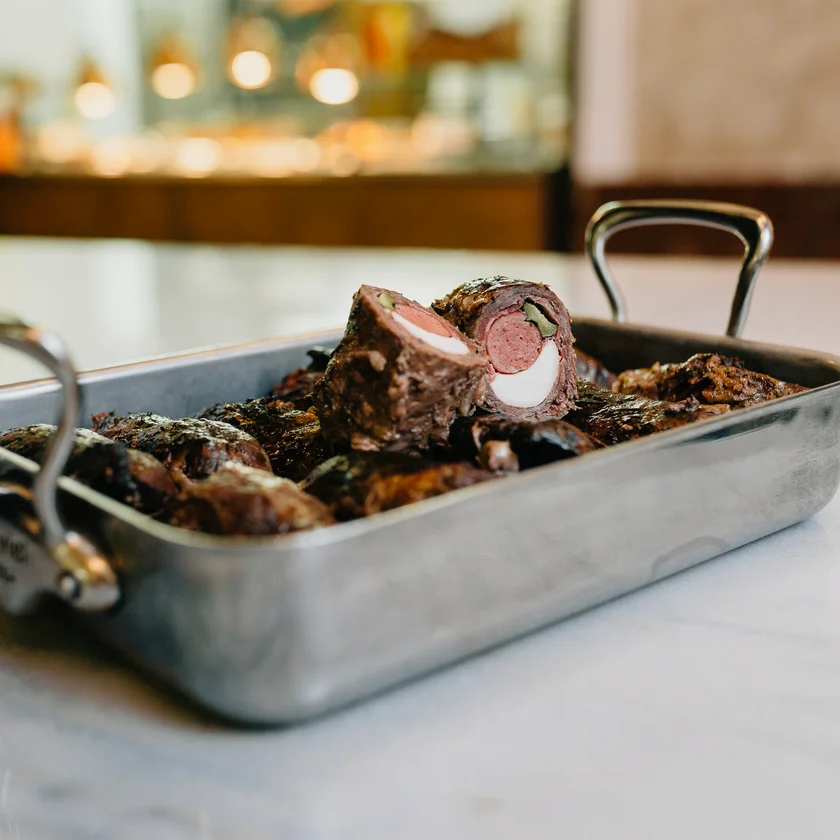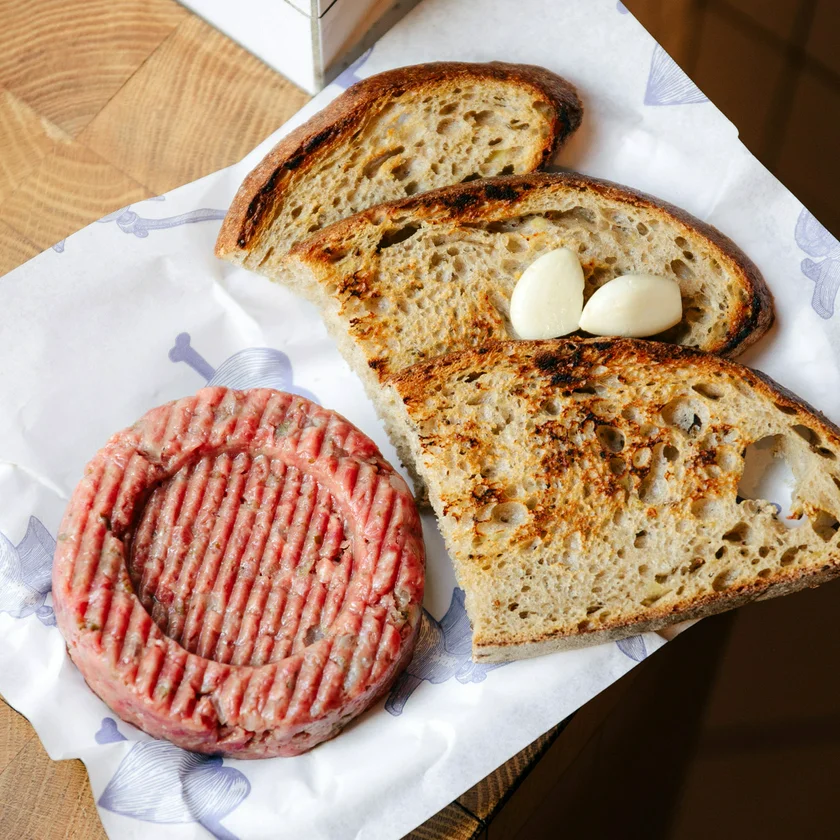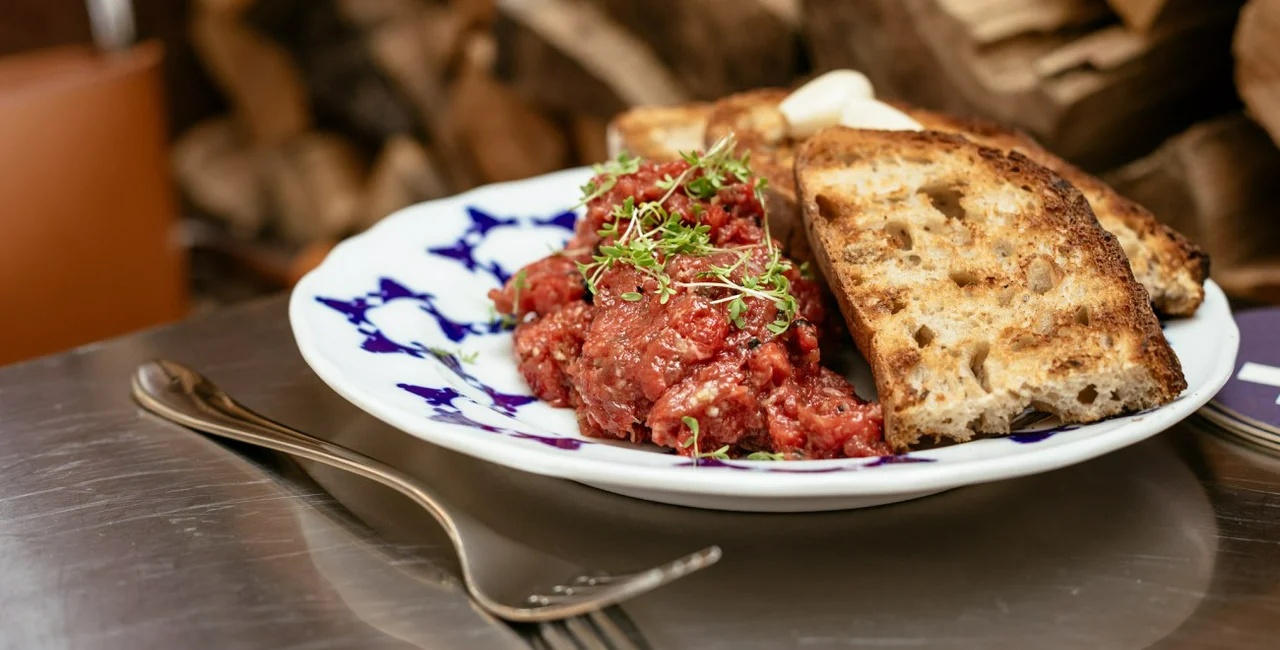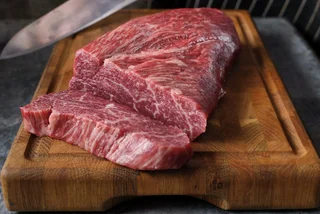Frankfurt soup, Spanish bird with rice, and harlequin with Parisian whipped cream: a typical Czech menu raises eyebrows for having so many traditional recipes with foreign-sounding names. We asked culinary experts from Ambiente to look into the origins of some dishes that arrived in Czechia after a long journey.
Talián sausage (a.k.a. uggovka or užovka)
The "Talián" boiled sausage, crafted from a combination of tender young beef and pork neck, burst onto the scene in the restaurants of Old Town during the late 19th century. Its creator, an Italian sausage maker named Uggé, settled in Rybná Street and quickly gained recognition for his culinary masterpiece. The locals affectionately bestowed the nickname Talián not only upon Uggé but also upon his nameless delicacy, which boasted a delightful, unique spicy flavor. Some even referred to it as "uggovka" or "užovka" in honor of its ingenious creator.
The creation of the sausage was documented as far back as the late 19th century, as seen in Marie Rosická's book "Butchery and Sausage Making." According to František Kšána, the esteemed head chef of Naše maso, the sausage is made with a blend of pepper, ginger, cardamom, garlic or thyme, and lemon zest, expertly stuffed into a beef casing. when served with horseradish and mustard, Talián sausage truly captures a unique blend of Czech and Italian flavors.
Spanish bird (Španělský ptáček)
The classic Czech dish the Spanish bird has a truly southern ancestor, "El niño envuelto," (the wrapped child) a veal roll stuffed with anchovies, onions, parsley, egg yolks, and crushed pepper which originated from Spanish cooks who moved to the Czech court of Emperor Rudolf II in the 16th century.
The first recipe for the dish appeared in a 17th-century treatise that's currently housed in the Strahov library. The famed Czech cooking tome, A Household Cookery Book by Czech author Magdalena Dobromila Rettigová, described the Spanish bird as a cabbage leaf stuffed with minced pork meat. The classic recipe featuring veal and anchovy stuffing with onions was replaced in the 1950s by beef roast, bacon, eggs, and pickles.

Wiener schnitzel (Řízek)
The history of Wiener schnitzel, or řízek as it is locally known, is also quite long. Although it is an essential part of Austro-Hungarian cuisine, it was not unknown in ancient Greece, Arabia, and Spain. It did not come to Vienna until the mid-19th century, thanks to a Czech nobleman enrolled in the Austrian army, field marshal Joseph Radetzky von Radetz.
In Venice, he tasted Veal Milanese, a schnitzel coated in breadcrumbs and Parmesan cheese, and mentioned it to Emperor Franz Joseph I. But the court cook had no parmesan, so he used flour and eggs instead. The Wiener schnitzel was thus born, and since the Czech lands are not far from Vienna, it quickly became popular here too.
Dutch schnitzel with cheese (Holandský řízek se sýrem)
Despite its name, the Dutch schnitzel is of purely Czech origin. Its only connection to the Netherlands comes via the cities of Edam and Gouda, where the cheese used in this recipe comes from. At Lokál, this is grated into the minced pork belly meat and mixed with eggs and parsley. We have not been able to find out exactly when and how Dutch schnitzel became a Czech specialty, so if a Dutchman asks you, just say "cheese."
Frankfurter soup (Frankfurtská polévka)
These world-famous sausages, arguably the most famous in the world, came from Frankfurt am Main in the 15th century, where they were first smoked. The first known recipe from the 18th century dictated that sausages should be made only from lean meat, and about a hundred years a factory near Frankfurt started producing the sausages for export.
How they made their way into Czech soups is less clear. "Our country has always been linked to Germany or Austria, and later Austria-Hungary, so it is not surprising that most of our sausages come from these countries. Whether it was gothaj, tlačenka or uherák. The only truly Czech sausages are Prague ham and tourist salami," explains Kšána.
The sausages that Johann Georg Lahner began smoking in Vienna after his return from Frankfurt as "Viennese" came to the region a bit sooner. However, one of the most popular Czech soups "frankfurtská" incorporates these thin sausages into the beloved recipe.
Steak tartare (Tatarský biftek)
Almost all gastronomic journeys lead to France, and tartar steak was in vogue in Paris at the turn of the 19th and 20th centuries, served with capers, egg yolk, and onions, and later with Dijon mustard. However, steak tartare (tatarský biftek) was first named Steak à l'Americaine by French chefs who liked to joke that Americans are barbarians who don't even know how to cook meat.

Eventually, the dish, which originally evolved from the French Polynesian tradition of eating raw meat, began to be served with mayonnaise instead of an egg yolk. But not just any mayonnaise. French chefs added pickles, garlic, shallots, and various spices to the mayonnaise served with the raw dish. So the credit doesn't exactly go to the Americans or even the Tatars who used to preserve raw meat under the saddles of their horses but to the French language.
Parisian Cake (Dort Paříž)
The name Parisian cake was likely whipped up by Czech pastry chefs along with the cream. It belongs to a family of chocolate cakes that utilize French whipped cream with slight variations. The cake enjoyed great popularity at the Myšák confectionery during the First Republic when it was named Macharův dort (Machar's cake) for Josef Svatopluk Machar, a poet, and novelist from the First Republic, who liked the Viennese Sacher cake, a cocoa sponge will an apricot marmalade filling.
Myšák pastry chef Lukáš Pohl explains that these cakes are made using chocolate that's been cooked down with whipped cream and left to rest for a day before being whipped. The same filling is also used in a cream cake called Harlequin. The Parisian cake is also called Fairy Tale cake, or dort pohádkový, thanks to its fantastical whipped cream clouds and beautiful presentation. You can try it at Myšák Pastry Shop today.
In the Czech Kitchen is a weekly column written in cooperation with the culinary experts from Ambiente. Established in 1995, the Prague-based collective of pubs, restaurants, and fine-dining outlets has transformed the Czech culinary landscape and lent to the widespread awareness of quality food service and production in Czechia. Follow their socials or book your table at www.ambi.cz.












 Reading time: 5 minutes
Reading time: 5 minutes 




















